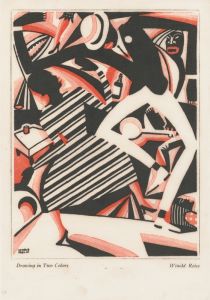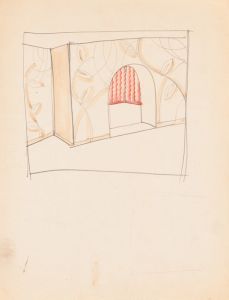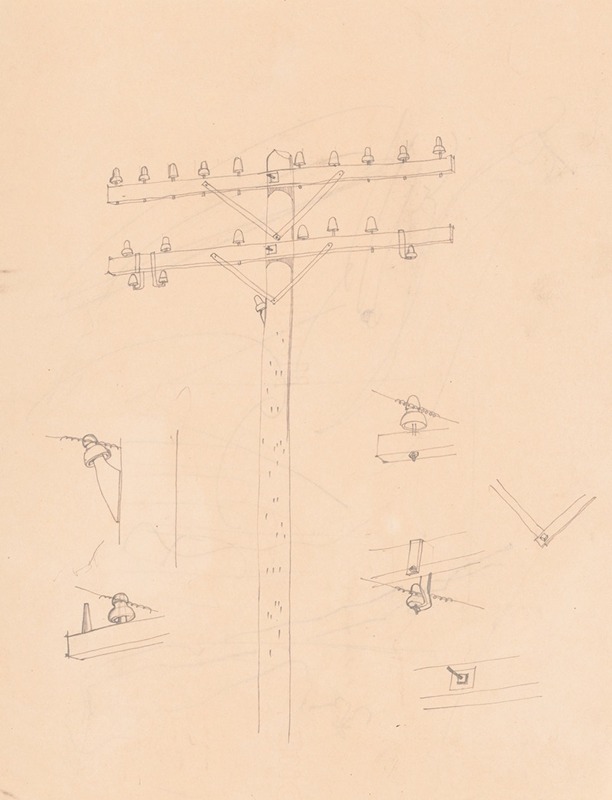
Graphic designs for Fortune magazine. Study of telephone poles
A hand-painted replica of Winold Reiss’s masterpiece Graphic designs for Fortune magazine. Study of telephone poles, meticulously crafted by professional artists to capture the true essence of the original. Each piece is created with museum-quality canvas and rare mineral pigments, carefully painted by experienced artists with delicate brushstrokes and rich, layered colors to perfectly recreate the texture of the original artwork. Unlike machine-printed reproductions, this hand-painted version brings the painting to life, infused with the artist’s emotions and skill in every stroke. Whether for personal collection or home decoration, it instantly elevates the artistic atmosphere of any space.
Winold Reiss was a German-American artist and designer known for his contributions to graphic design and his distinctive style that often incorporated elements of modernism and cultural diversity. One of his notable works is the graphic design piece titled "Study of Telephone Poles," which was created for Fortune magazine. This piece exemplifies Reiss's ability to blend artistic creativity with commercial design, a skill that made him a sought-after illustrator during the early to mid-20th century.
Reiss was born in Karlsruhe, Germany, in 1886 and immigrated to the United States in 1913. He brought with him a European sensibility and a keen interest in the cultural diversity of his new home. Throughout his career, Reiss was known for his portraits of Native Americans and African Americans, as well as his work in interior design and commercial art. His style was characterized by bold colors, geometric forms, and a keen attention to detail, all of which can be seen in his work for Fortune magazine.
Fortune magazine, established in 1930, was known for its high-quality journalism and its commitment to visual excellence. The magazine often commissioned artists to create covers and illustrations that were both aesthetically pleasing and thematically relevant to the content. Reiss's "Study of Telephone Poles" fits within this tradition, as it reflects both the technological advancements of the time and the artistic trends that were prevalent in the 1930s.
The "Study of Telephone Poles" is a striking example of how Reiss used everyday subjects to create visually compelling compositions. Telephone poles, a symbol of modern communication and technological progress, are depicted with a sense of rhythm and movement. Reiss's use of color and form transforms these utilitarian structures into an artistic exploration of line and space. The piece captures the essence of an era when technology was rapidly changing the landscape of America, both literally and figuratively.
Reiss's work for Fortune magazine, including the "Study of Telephone Poles," demonstrates his ability to merge fine art with commercial illustration. His designs were not only visually appealing but also intellectually engaging, often prompting viewers to consider the broader implications of the subjects he depicted. This approach was in line with Fortune's editorial mission to provide insightful analysis of economic and industrial trends.
In addition to his work for Fortune, Reiss's legacy includes a wide range of artistic contributions, from murals and interior designs to portraits and graphic illustrations. His influence extended beyond the art world, impacting the fields of design and advertising as well. Reiss's ability to capture the spirit of his time while maintaining a unique artistic voice has ensured his place in the history of American art and design.
Overall, Winold Reiss's "Study of Telephone Poles" for Fortune magazine is a testament to his skill as an artist and his ability to engage with contemporary themes through his work. It remains an example of how graphic design can transcend its commercial origins to become a meaningful commentary on the world.





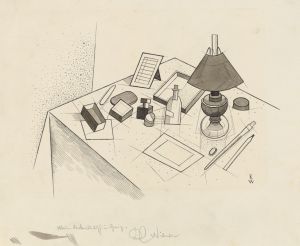
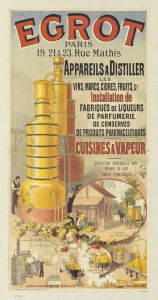
![Graphic design for cover of Survey Graphic Magazine; ‘Color, Unfinished Business of Democracy’.] [Design with map of Earth and human faces](/imgs/249247/s/winold-reiss-graphic-design-for-cover-of-survey-graphic-magazine-color-unfinished-business-of-democracy-design-with-map-of-earth-and-human-faces-c4efe311.jpg)
![Graphic designs for Fortune magazine.] [Study for cover with large telephone lines superimposed over the globe](/imgs/249254/s/winold-reiss-graphic-designs-for-fortune-magazine-study-for-cover-with-large-telephone-lines-superimposed-over-the-globe-2de5efe.jpg)
![[Design for mural in unidentified bar or restaurant.] [Study for mural]](/imgs/249261/s/winold-reiss-design-for-mural-in-unidentified-bar-or-restaurant-study-for-mural-93fd9e8e.jpg)
![Designs for staged commercial or trade exhibition displays of coal-fired water heaters and furniture.] [Perspective sketch featuring flames](/imgs/249323/s/winold-reiss-designs-for-staged-commercial-or-trade-exhibition-displays-of-coalfired-water-heaters-and-furniture-perspective-sketch-featuring-flames-367ef0b8.jpg)
![Designs for the Puck Theater , New York, NY.] [Exterior perspective study](/imgs/249327/s/winold-reiss-designs-for-the-puck-theater-new-york-ny-exterior-perspective-study-df16fd5a.jpg)
![Designs for unidentified restaurant interior, possibly Elysée restaurant, 1 East 56th St., New York, NY.] [Drawing of restaurant details](/imgs/249333/s/winold-reiss-designs-for-unidentified-restaurant-interior-possibly-elysee-restaurant-1-east-56th-st-new-york-ny-drawing-of-restaurant-details-5319cbfe.jpg)
![Drawings for proposed decorations of Mike Lyman’s Restaurant, 424 W. Sixth St., Los Angeles, CA.] [Color scheme for ceiling, playroom – bar – foyer](/imgs/249337/s/winold-reiss-drawings-for-proposed-decorations-of-mike-lymans-restaurant-424-w-sixth-st-los-angeles-ca-color-scheme-for-ceiling-playroom-bar-foyer-ba71c61c.jpg)
![Proposed decorations for Fisher Building, Detroit.] [Theatre foyer 109 & adjacent galleries](/imgs/249387/s/winold-reiss-proposed-decorations-for-fisher-building-detroit-theatre-foyer-109-adjacent-galleries-88035d64.jpg)
![Designs for theater with black-framed proscenium and boldly colored settings.] [Study for stage light wall decoration, possibly for Caf ̌Crillon](/imgs/249419/s/winold-reiss-designs-for-theater-with-blackframed-proscenium-and-boldly-colored-settings-study-for-stage-light-wall-decoration-possibly-for-caf-crillon-8d25205e.jpg)
